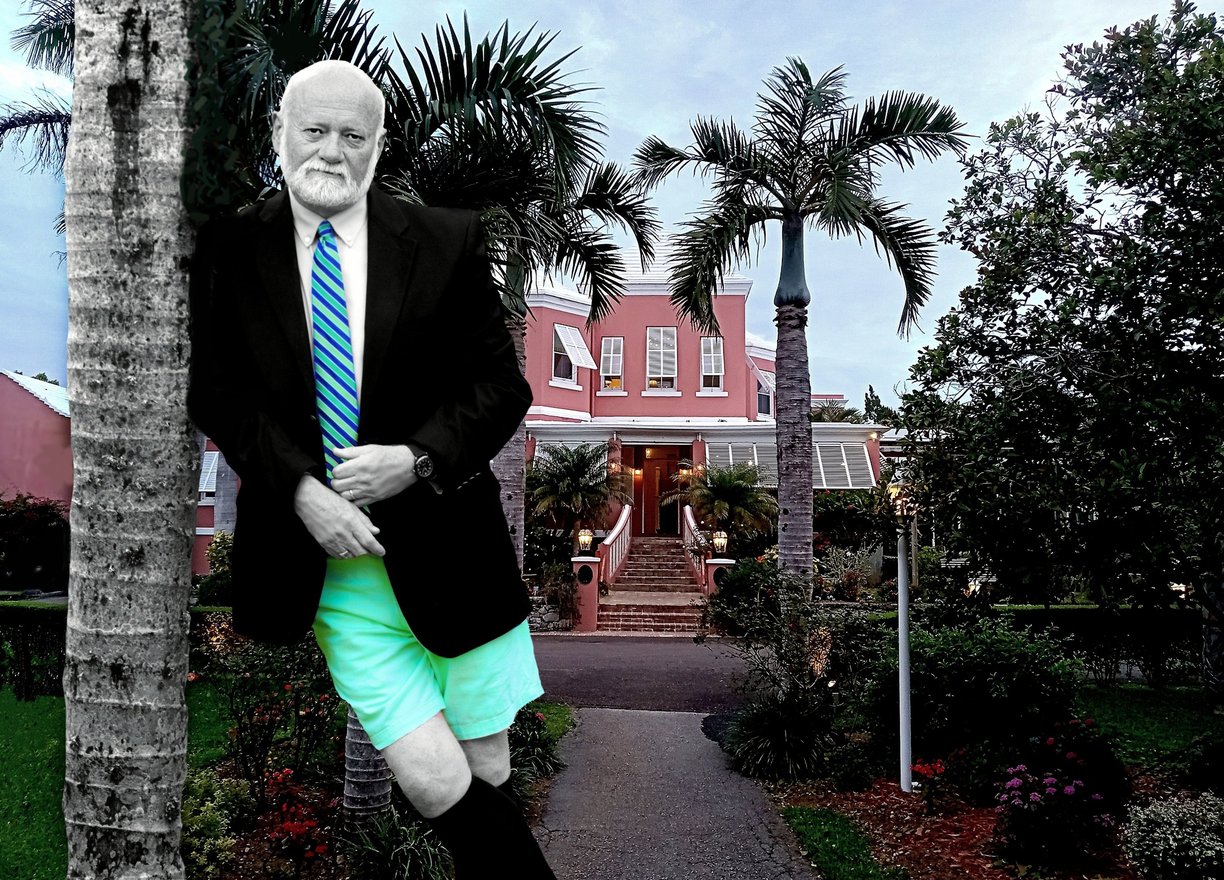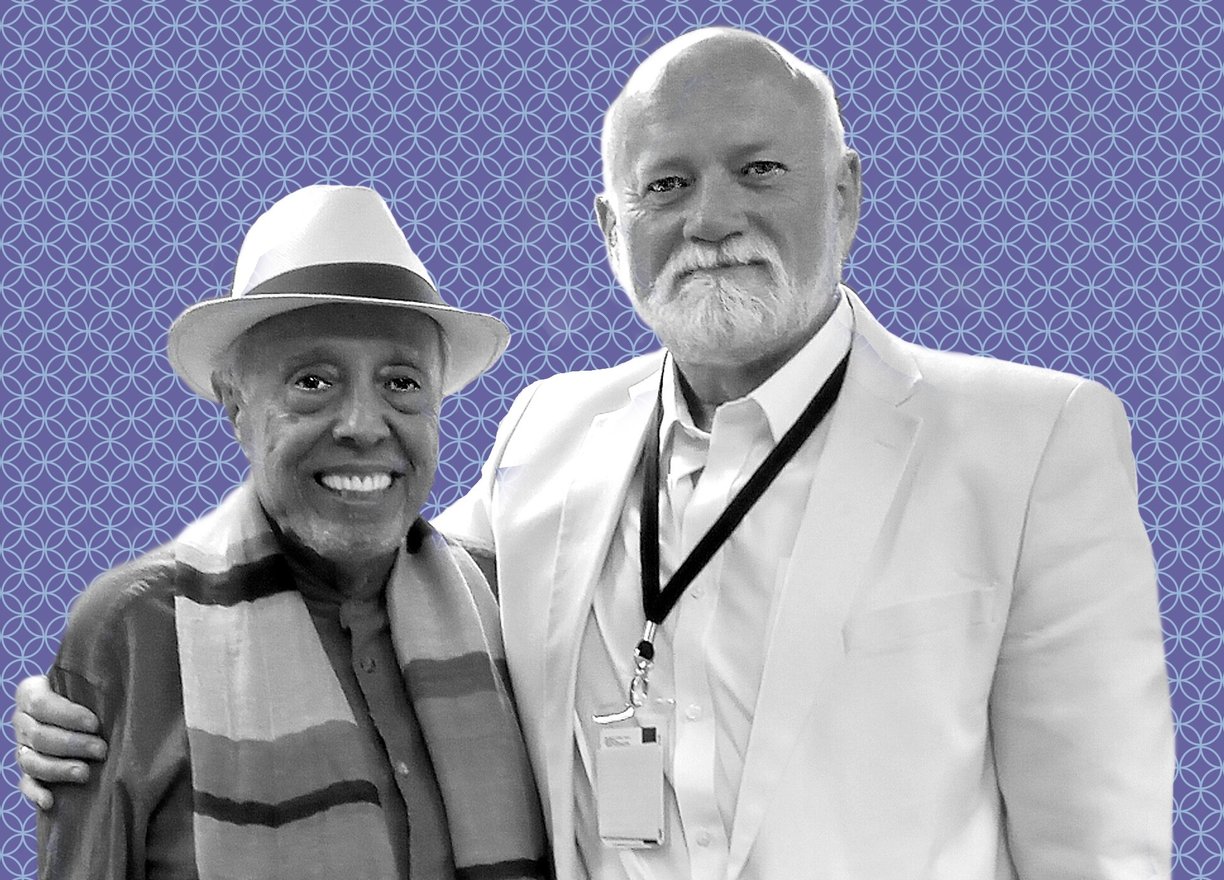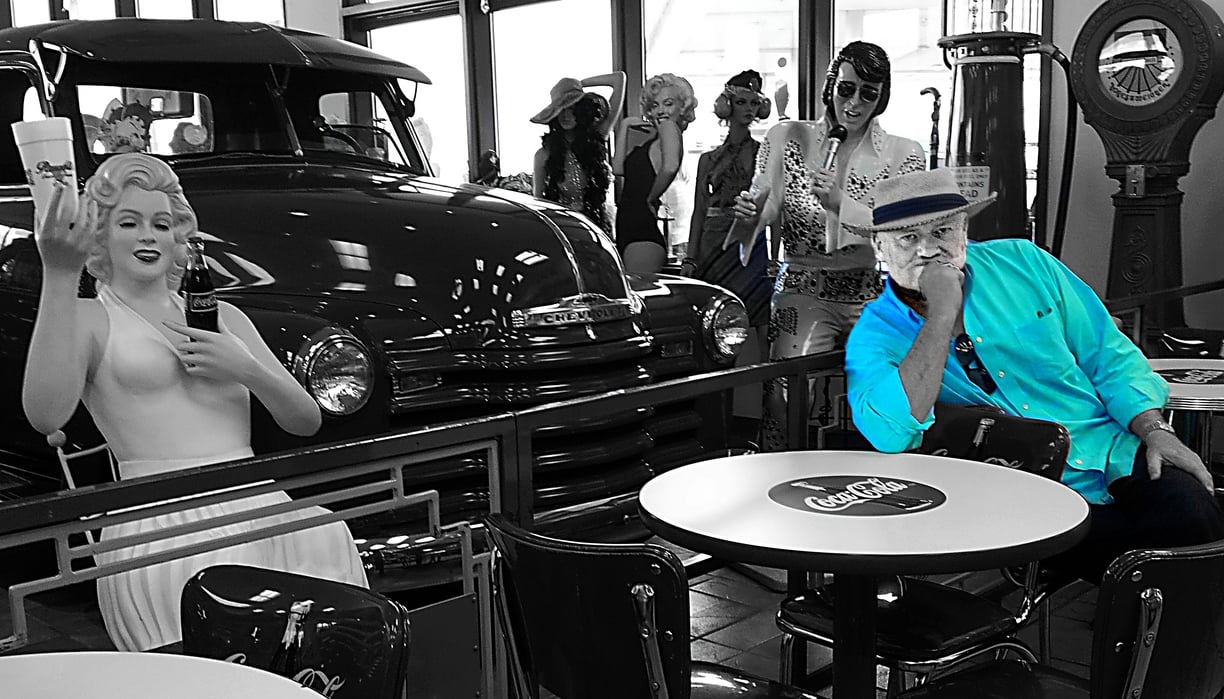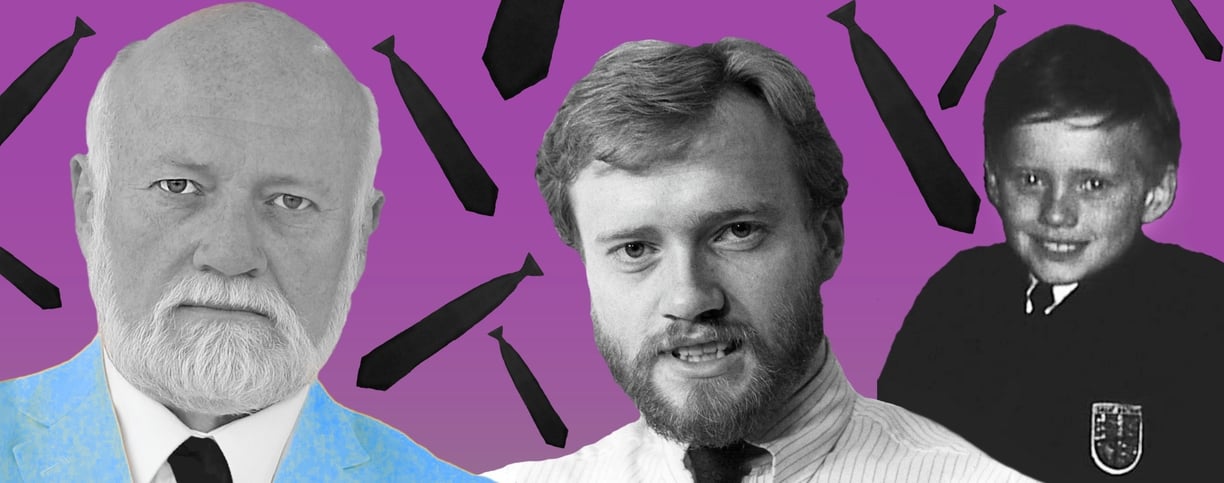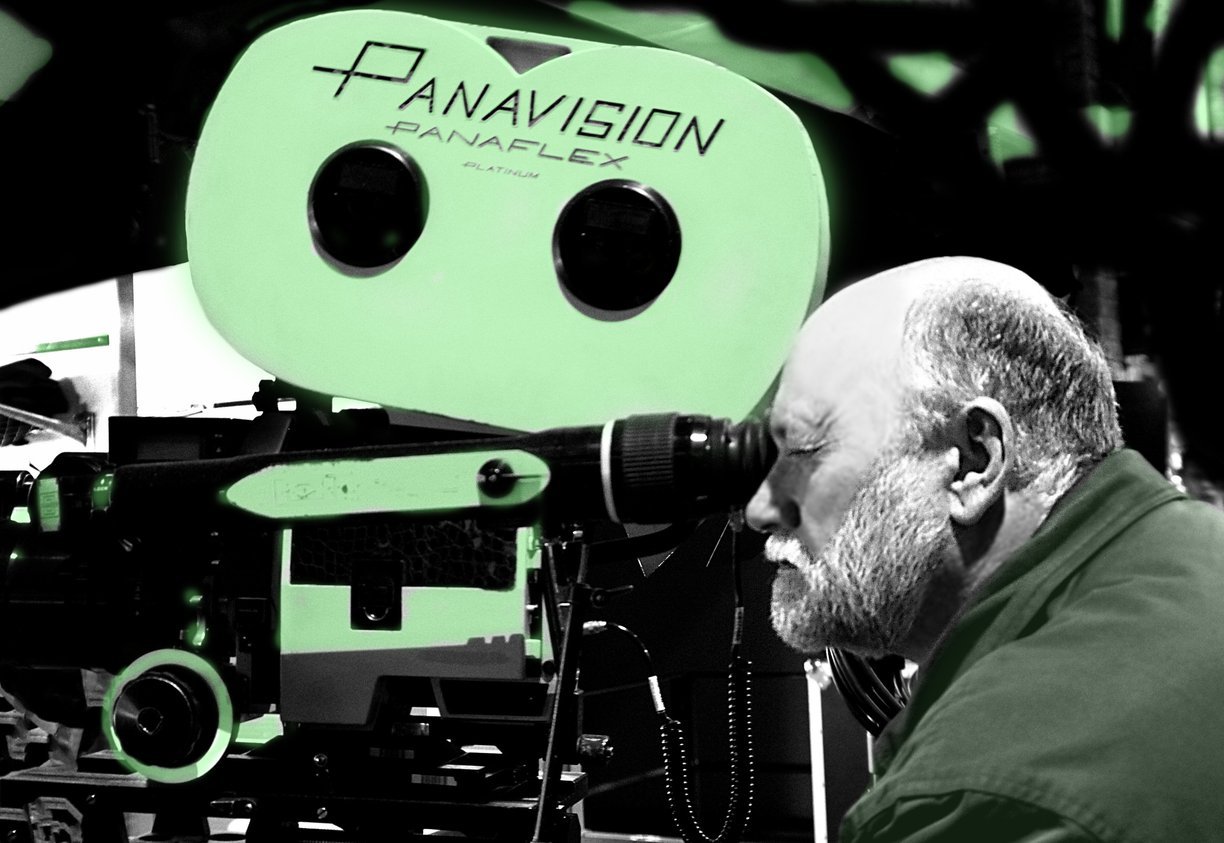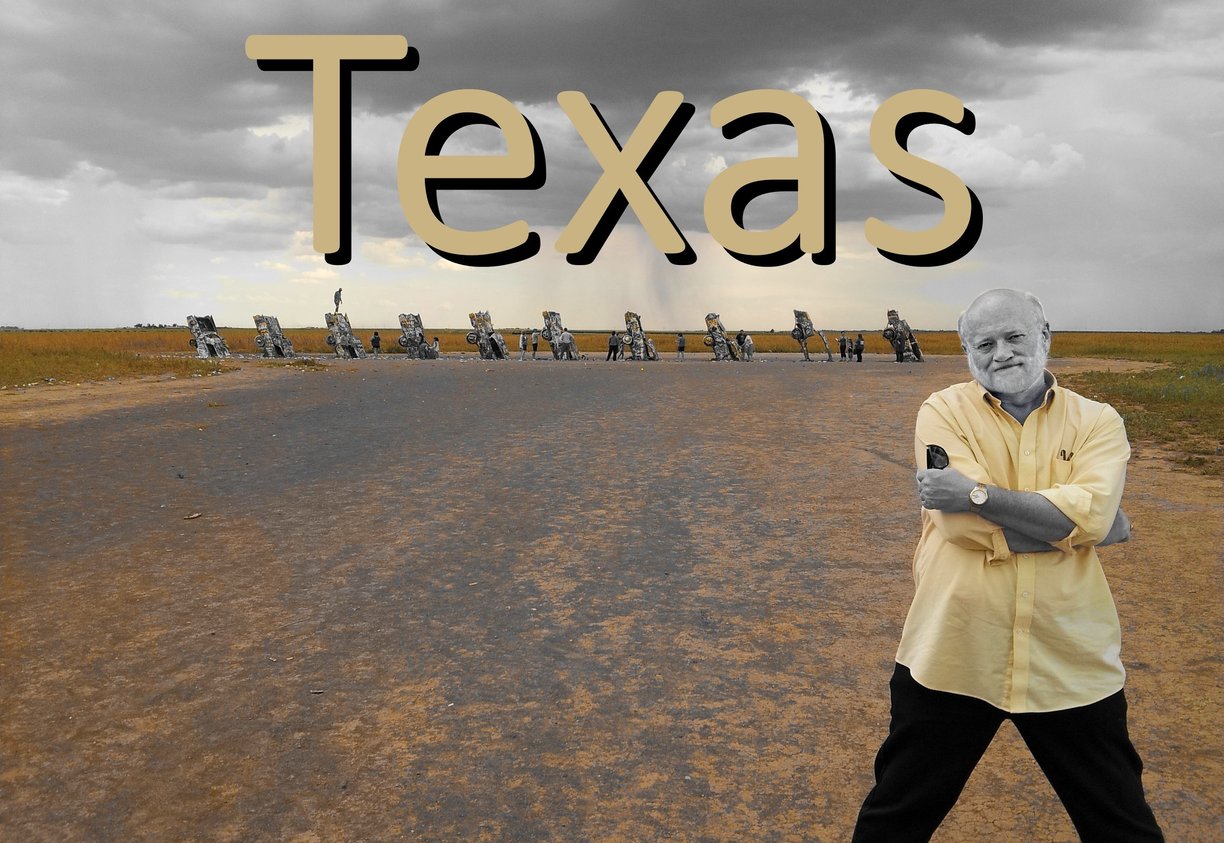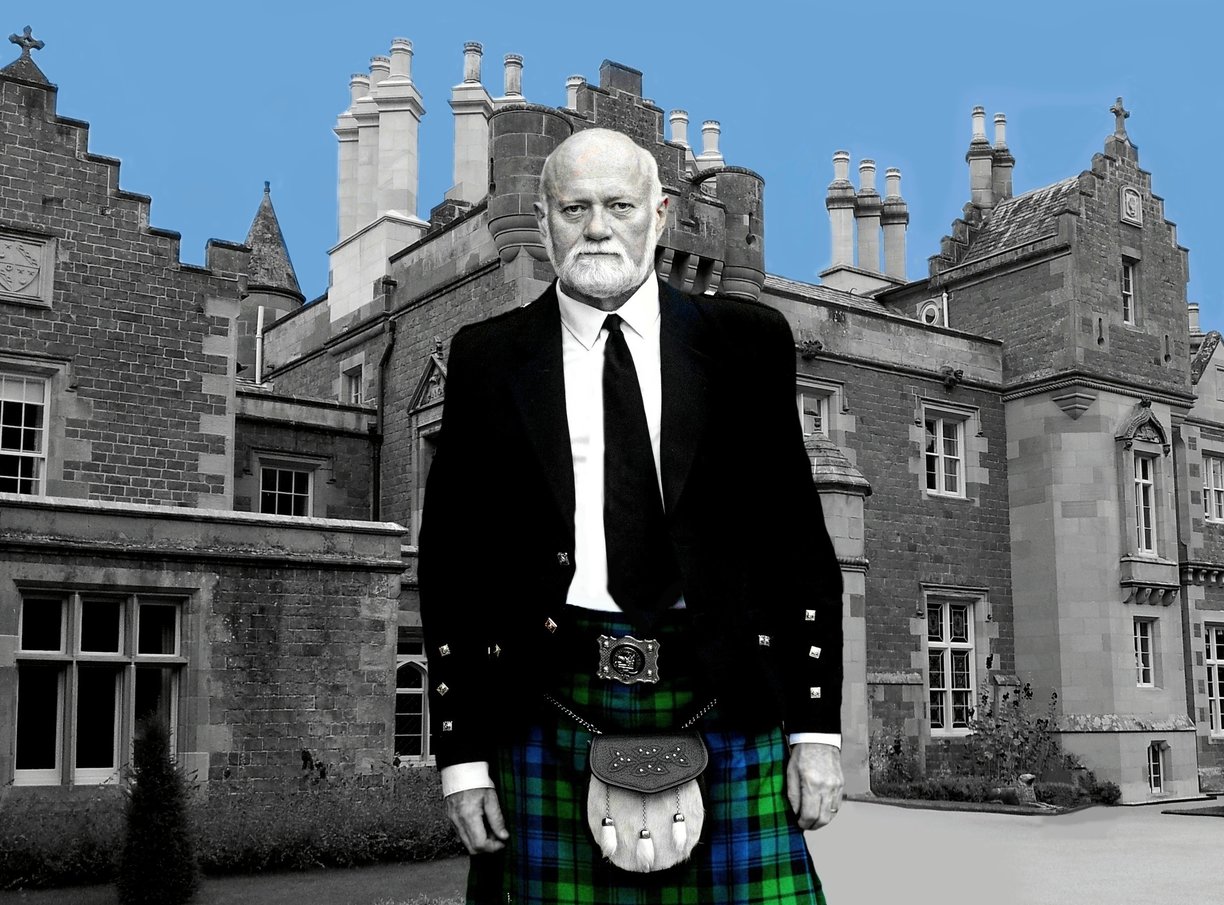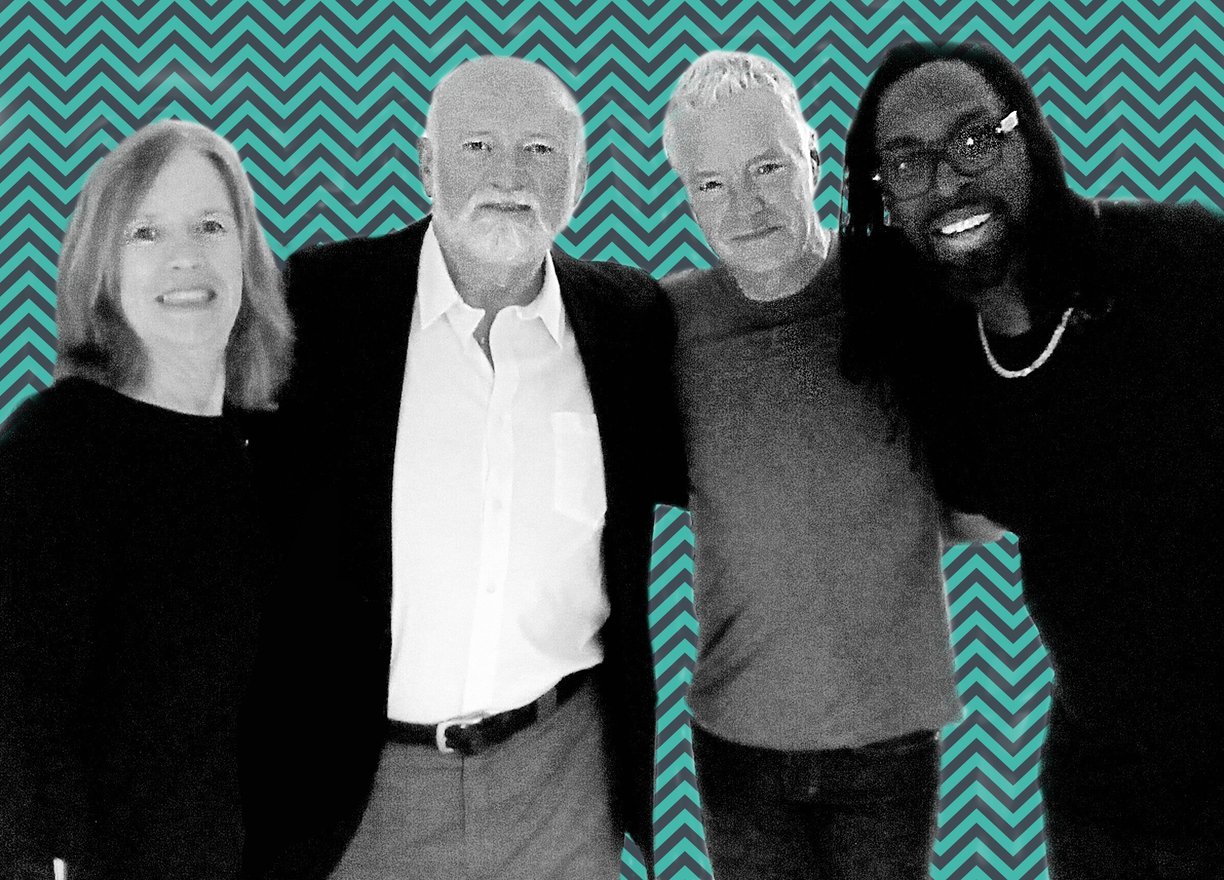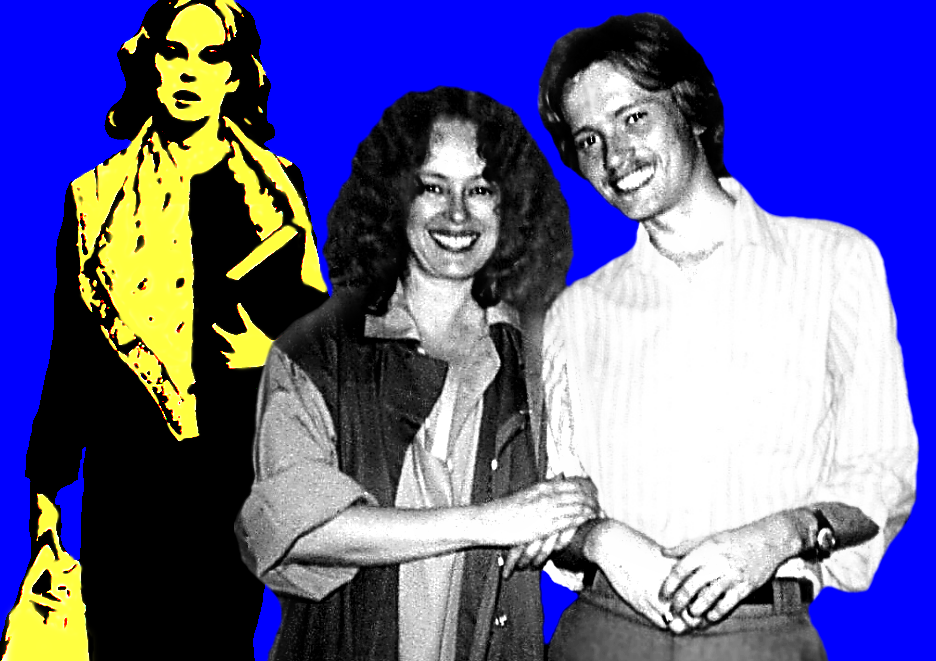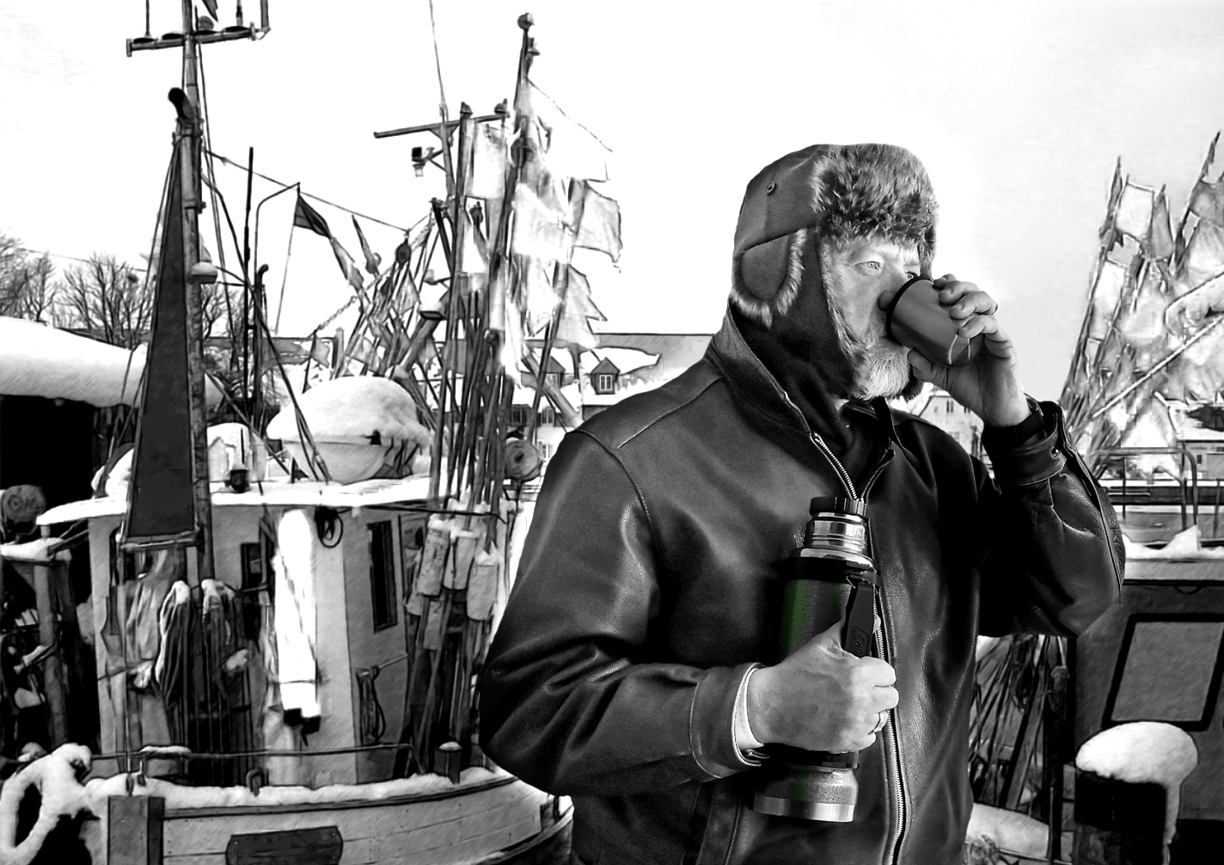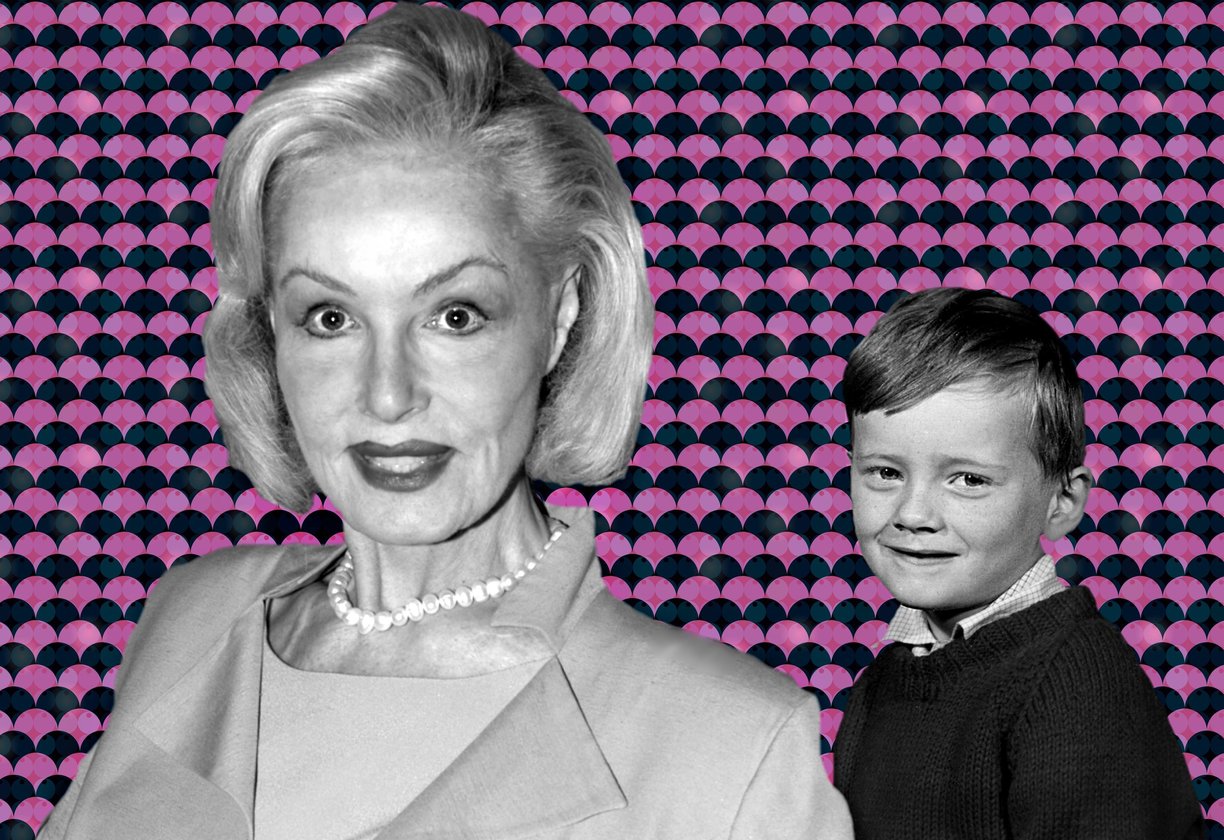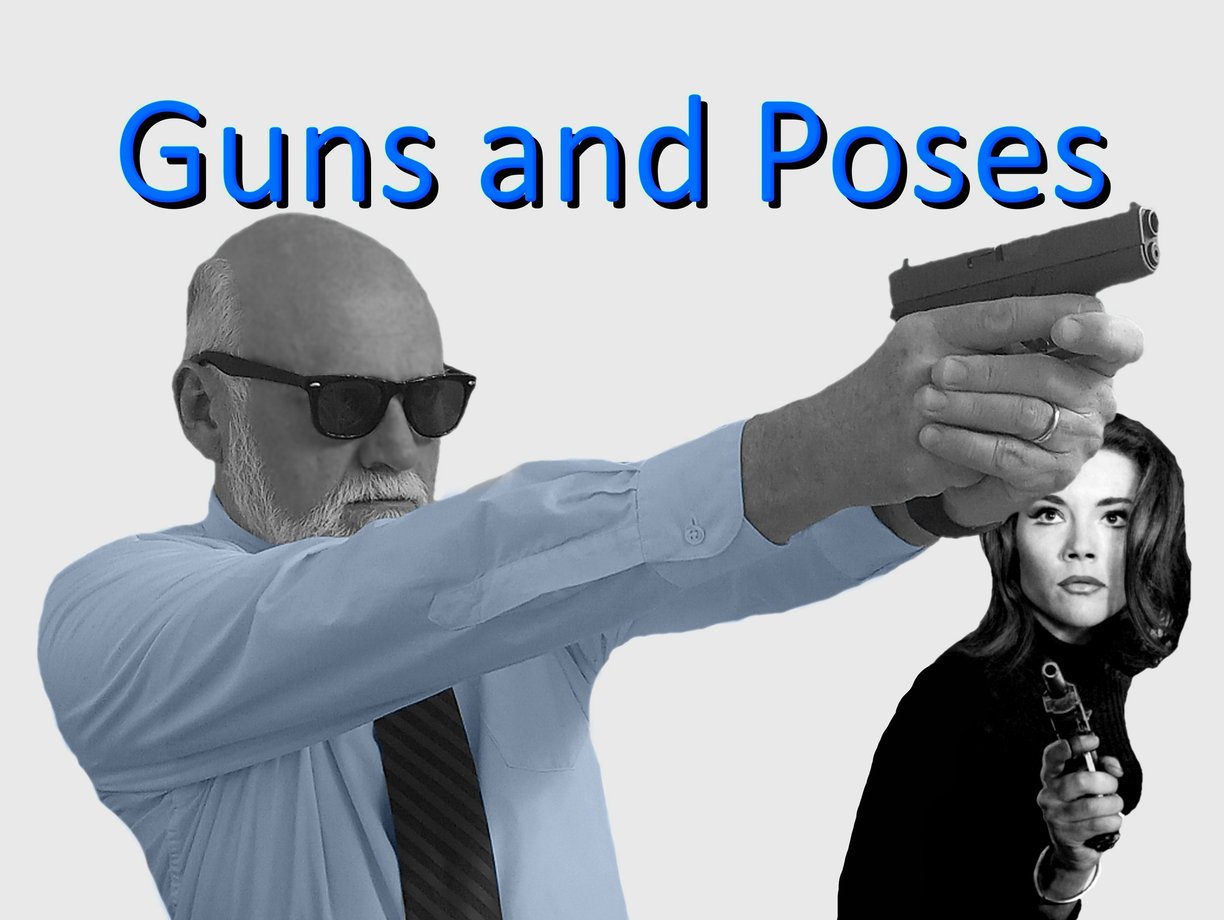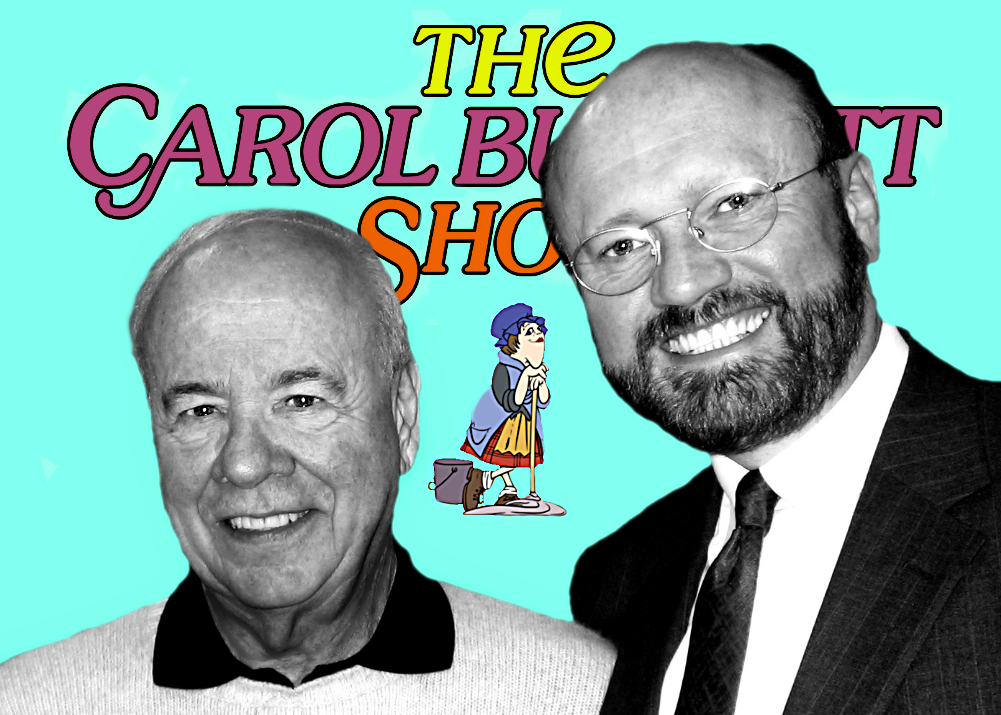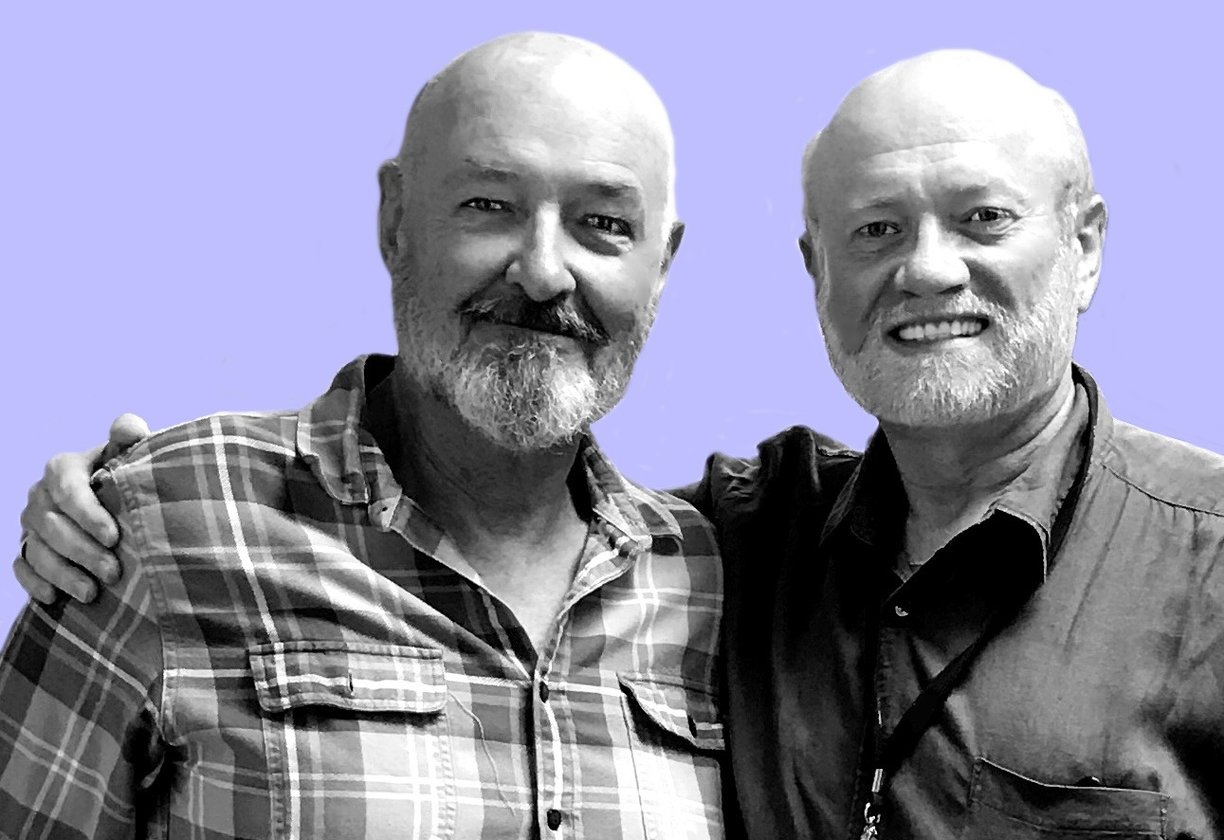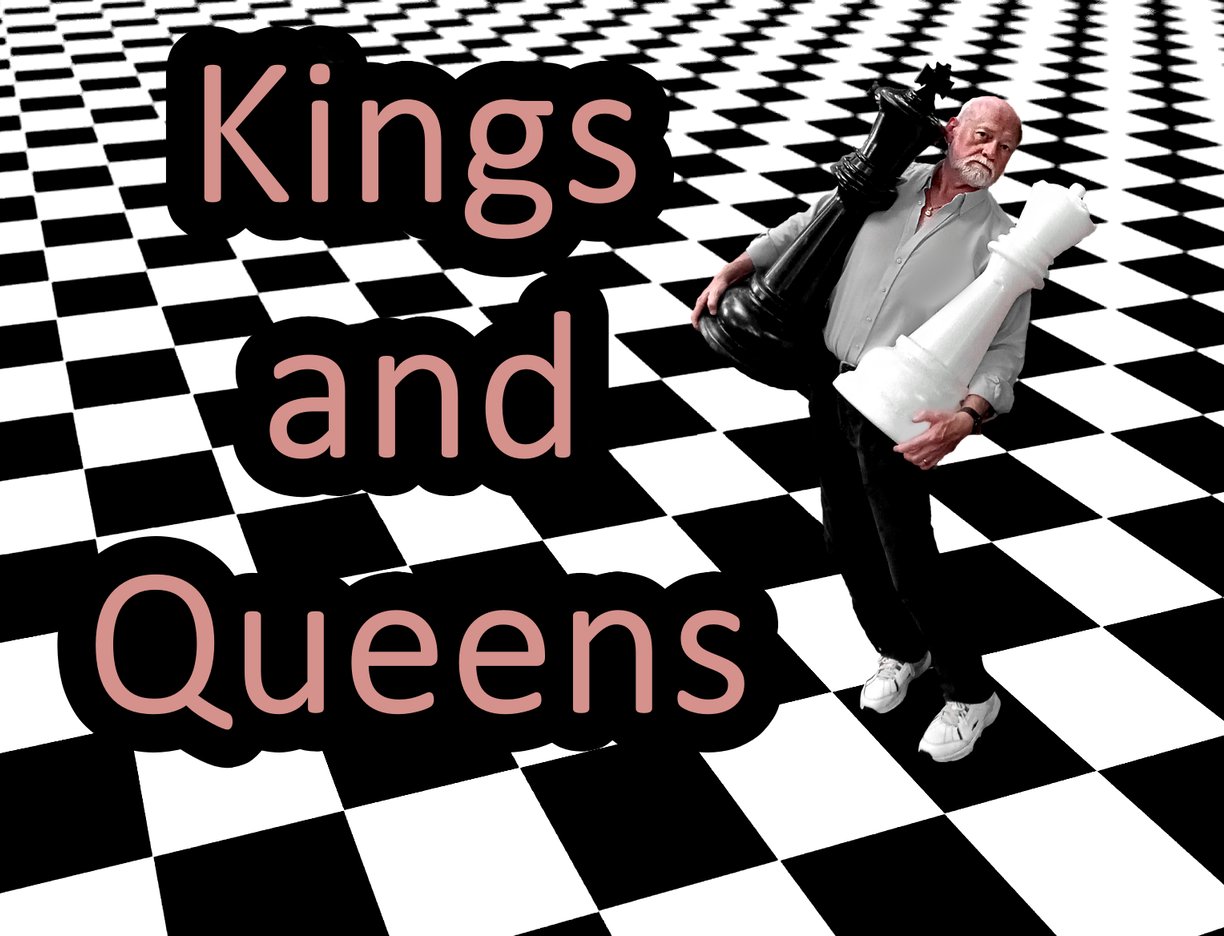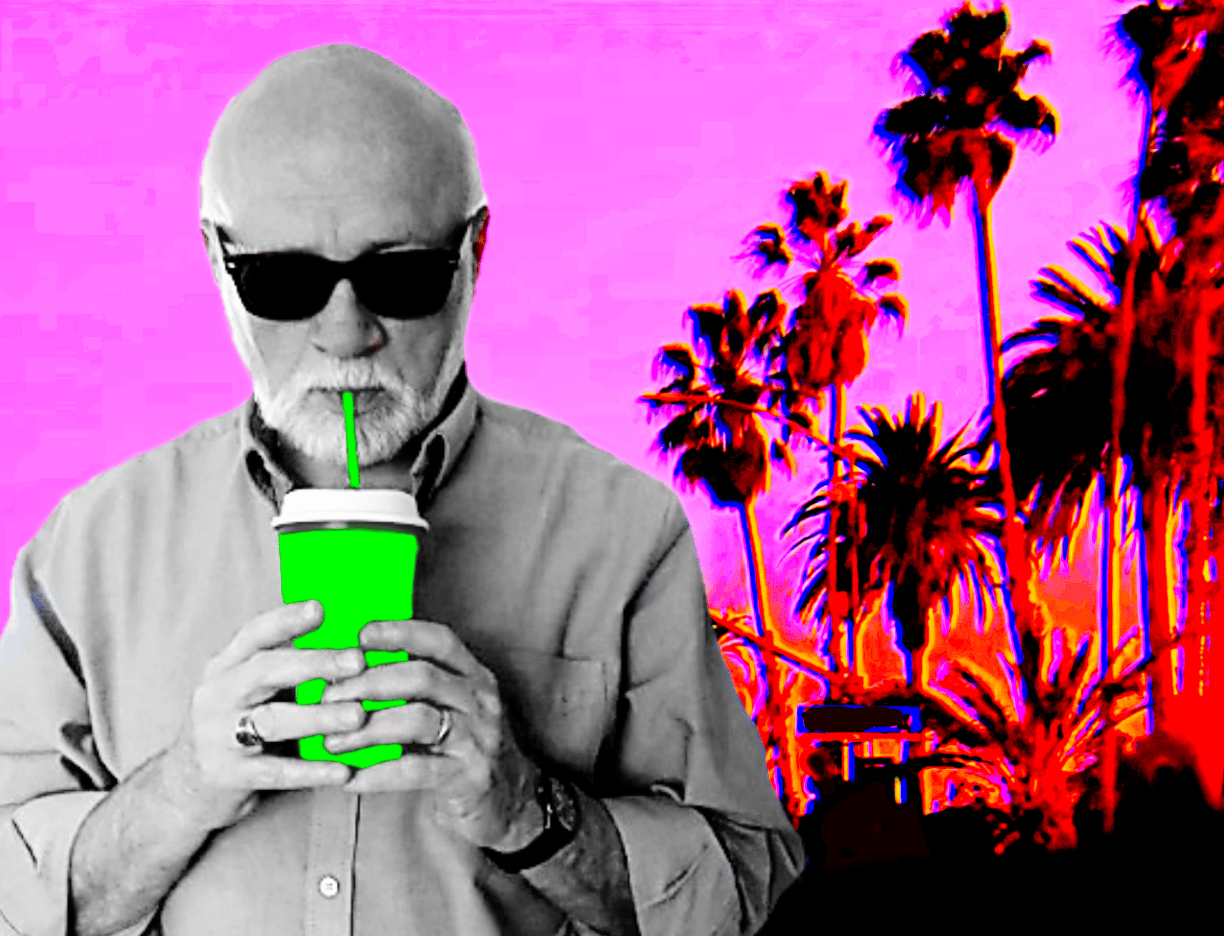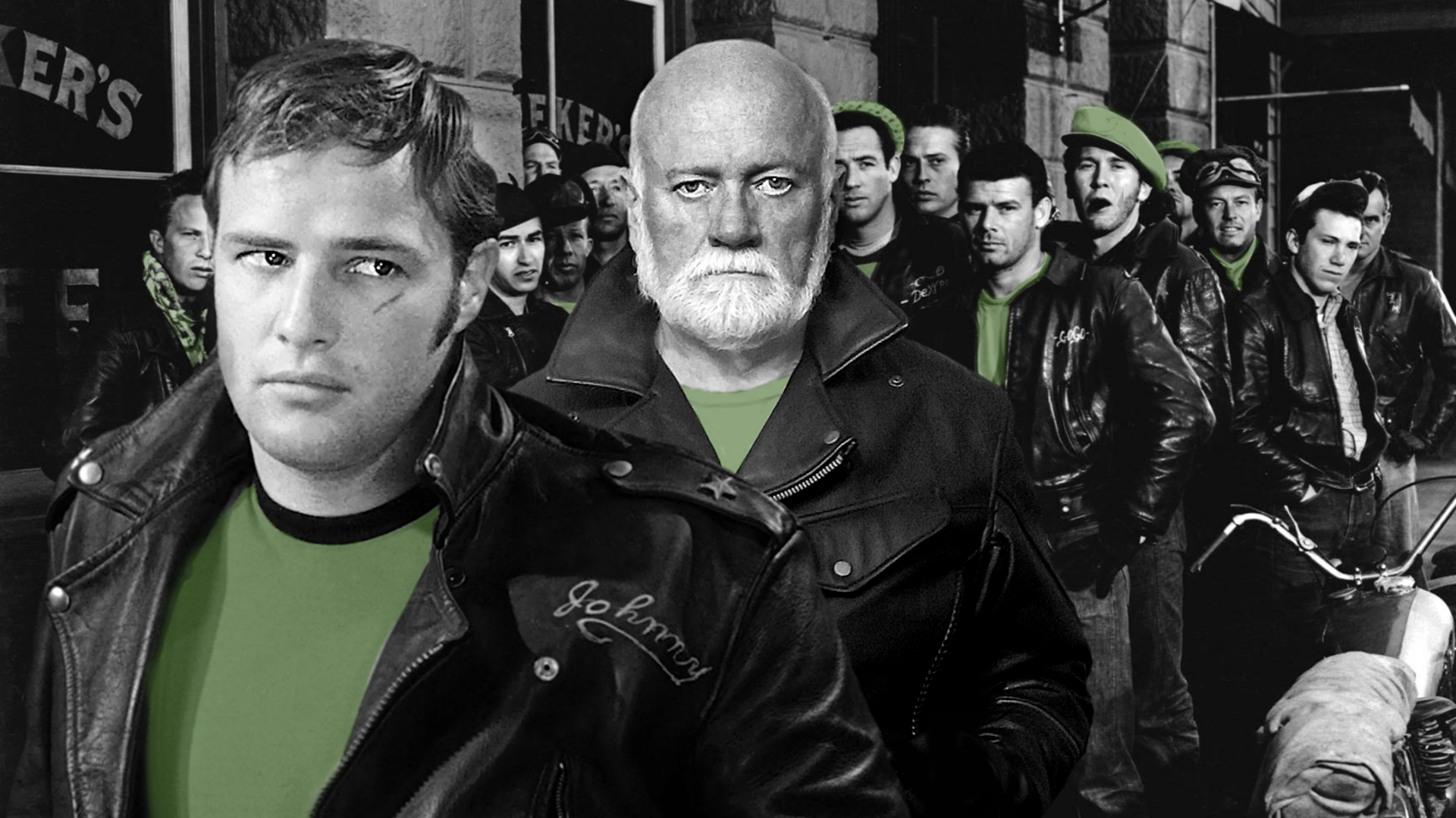
Applied Weight to a Kick-Start Engine
I am often asked about my political mooring. I should state that I am not aligned with any political party, however, I hasten to add, I am most definitely a conservative. Next comes the inquiry as to why I am conservative. The answer is well expressed by considering a movie from the last mid-century. In 1953 Columbia Pictures produced The Wild One, with Marlan Brando playing a rebellious leather clad biker named Johnny. In a key scene, a young woman asks Johnny what exactly is he rebelling against and in a quick dismissive retort he asks “Watcha’ got?”
Like Johnny, some characters on this planet are so eager for conflict that virtually any matter will suffice for rebellion. It is a matter of “Whatever you got – I’m against it.” Sadley, Johnny is a disgruntled spirit willing to give full throttle not only to his Triumph’s engine, but also to his hubris. Folly follows folly, as his attitude is antithetical to the conservative mindset of appreciating that which works effectively for society, before entertaining the idea of dismantling it.
In general, conservatives are hesitant about accepting change for change’s sake, which places them in reasoned harmony with the Roman Catholic journalist, G. K. Chesterton, who cautioned his readers never to remove a fence until they knew why it was put up in the first place. In other words, think and then think again, before making a possibly costly action. Evidently, someone once thought the fence necessary, so the prudent will consider exactly why they thought it necessary.
Even the most well-meaning “Johnnys” of the world tend to be high on passion and low on reflection, resulting in a defused and unfocused trajectory of wasted energy. Tear it down, bring it down, pull it down, call it down. High is the cost of such low thought.
We have all encountered disputatious persons. They may come in many forms, from an ornery neighbor to a bellicose relative seeking an unwelcomed Thanksgiving debate. Scale such matters up to the breadth and width of our country and you have the current condition of the United States. In short, Brando's character when duplicated en masse, is a dangerous thing - seeking inflammatory assaults on whatever comes to mind. Unquestionably, disgruntled kick-starters can ignite more than just compressed fuel, they can ignite nations.
Join Us
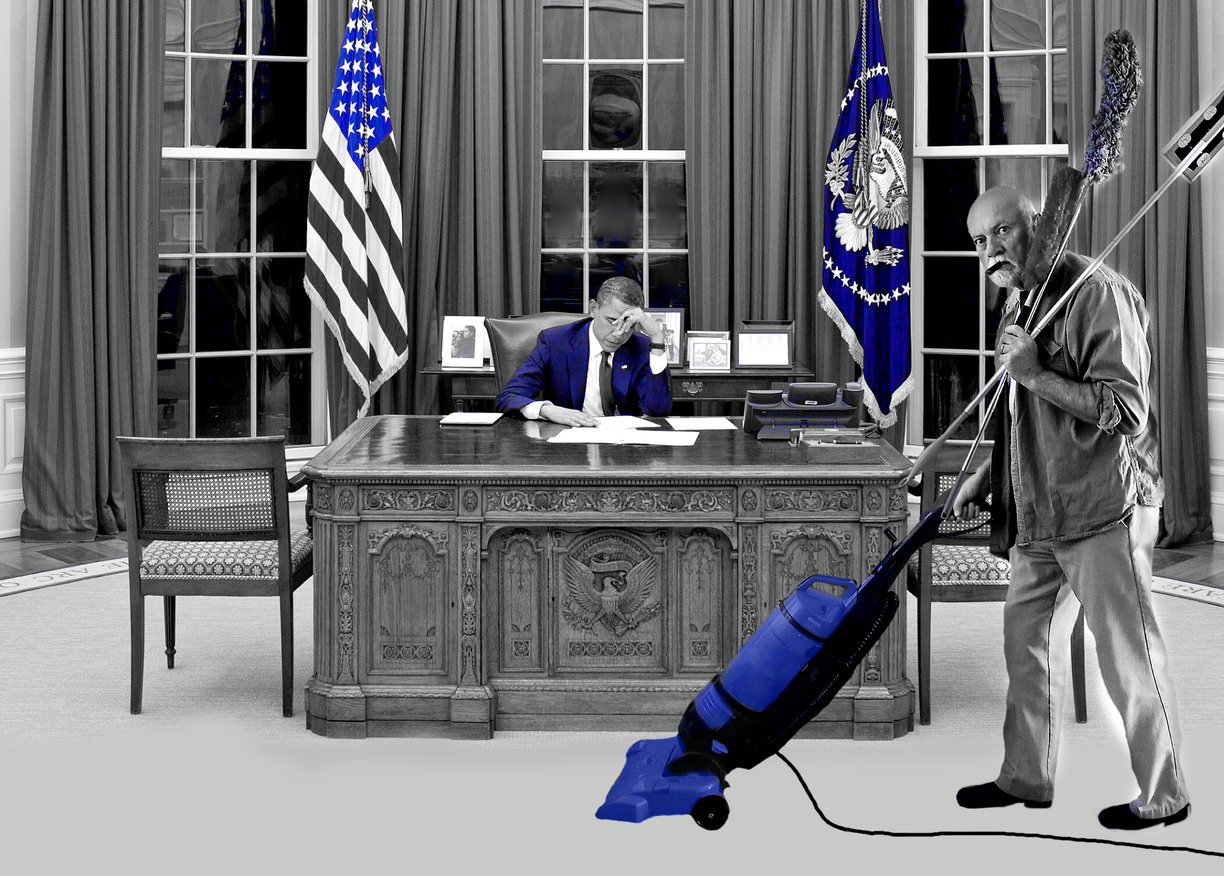

Hits and Grits
While working on a show about Patsy Cline, I traveled to her hometown of Winchester, Virginia. It was there that I encountered an on-going debate as to whether the country starlet had once worked at one of the town's eateries called The Triangle Diner. Some said she had, while others asserted that she hadn't. Interestingly, not only did biographers disagree among themselves on this point, but so too did her surviving family members. It is known that she worked briefly in a meatpacking facility killing chickens, before landing work at Winchester's Greyhound bus station. However, she was discovered to be underage in both positions. Patsy finally found steady work at Gaunt's Drug Store which was the prominent pharmacy in town. Still, just a short distance up the street was the aforementioned Triangle Diner. Patsy's daughter, Julie Fudge, believes that her mother had indeed worked there, although the length of time is uncertain.
Although no longer utilized, the closed facility retains its original footprint of forty-three feet by sixteen. Moreover, the interior is fully intact with its rounded ceiling, service counter, stools, booths and ornamentations still in place. The structure was manufactured in Elizabeth, New Jersey, in 1948 by the O'Mahony Dinner Company. Their work was considered the highest standard in the industry, causing other companies to be in a perpetual race to emulate them.
Not surprisingly, the company's diners' stainless-steel exteriors sometimes caused people to assume that the buildings were salvaged wheelless passenger railroad cars - but they weren't. However, they were designed as prefabricated buildings to be transported by rail with the same dimensions to diverse locations across the nation.
The Triangle Diner came to Winchester when Patsy was sixteen. At the very least, she no doubt would have eaten there. As there is talk of plans to reopen the hashery, I look forward to one day returning to Winchester to slide into a booth, for with or without Cline, no one wants to see this particular eatery remain in DE-Cline. Ooh, did I write that? Gosh, I guess I did!
A Home with a Four-Year Lease
At 1600 Pennsylvania Avenue, N.W. Washington, District of Columbia, stands the Executive Residence of the President of the United States. Once called the President's Palace, the nation's 26th president, Theodore Roosevelt Jr., dubbed the structure "The White House" in 1901 and it stuck. The building holds distinction as the most recognizable home in the world. Although he supervised its construction, the first president never lived in the house. George Washington and his successor, Thomas Jefferson, allocated that honor to John Adams.
Constructed in part by the use of slave labor and Irish exertion in exchange for meager wages, the final result was a handsome building that remained untarnished until 1813, when U.S. troops burned two parliamentary buildings in Canada. In retaliation, British troops lit the White House ablaze months later. However, that would not be the last occurrence of rapid oxidization.
On Christmas Eve 1929, a blocked flue ignited the building's West Wing causing severe damage. Nearly two decades later, in 1948, the building was set to be condemned, before it was decided that it would be best to gut the building, leaving only the outside remaining and then to reconstruct a new interior. In the process, subterranean levels were added providing a total of six floors. By 1952 President Harry Truman was able to move into the renovated residence.
I remember being in the White House for the first time and comparing it to the grandeur of Buckingham Palace. Although the leader of the free world's digs can't surpass such royal opulence, the president's home nevertheless succeeds with a restrained federal neoclassical order that thwarts pretentiousness.
During my visit, while in the East Rom, I recalled standing where President Nixon had given his final address to his staff on August 9, 1974. On that sad occasion, he had said, "This isn't the biggest house. Many and most - even in the smallest of countries - are much bigger. This isn't the finest house. Many in Europe, particularly in China, Asia, have paintings of great, great value - things that we just don't have here and probably will never have until we are a thousand years old or older, but this is the best house. It's the best house because it has something far more important than numbers of people who serve, far more important than numbers of rooms or how big it is, far more important than numbers of magnificent pieces of art. This house has a great heart and that heart comes from those who serve."
I like that sentiment. From the president's cabinet members to the housekeeping carpet cleaners, all who are born in the land, have had the same possibility of holding the nation's highest office and residing as its chief resident in its primary home.
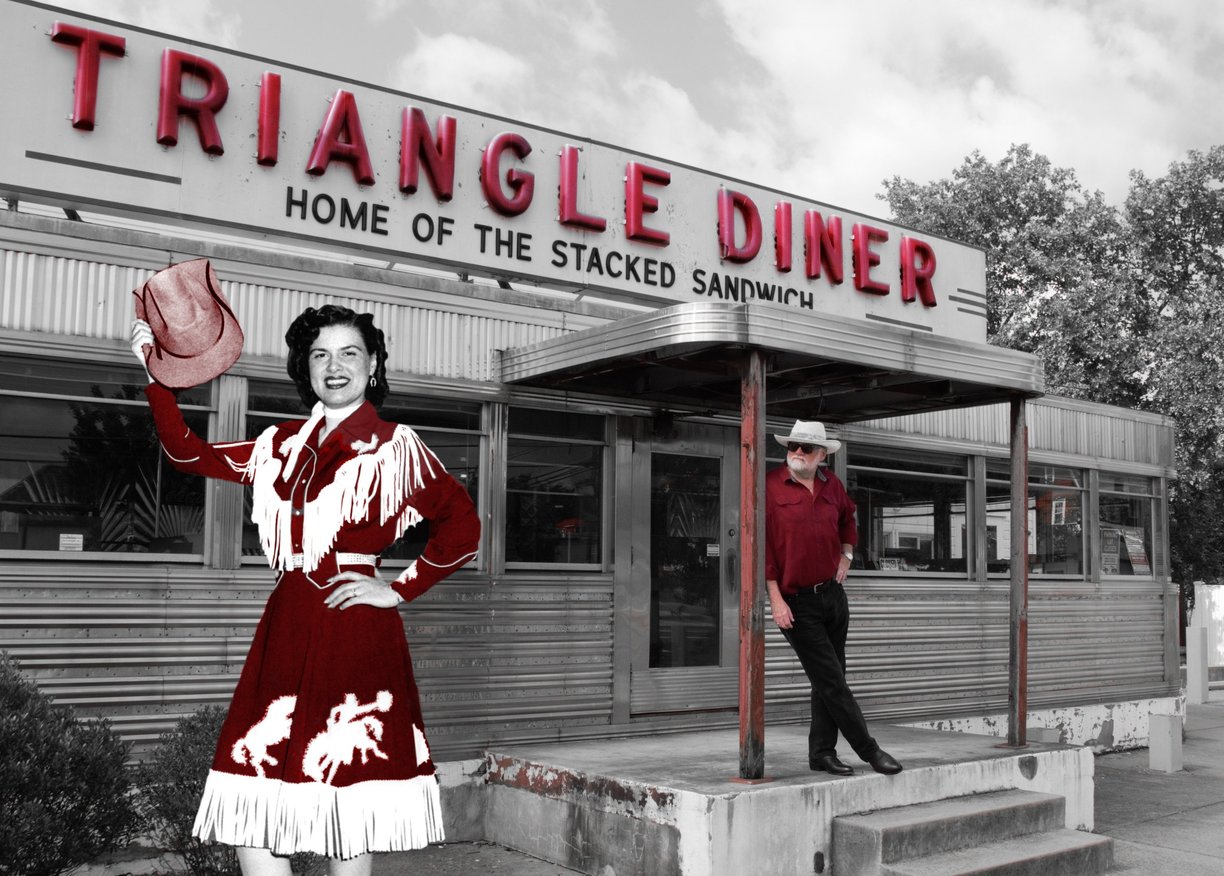

White Male Privileged Devils
It is painful to be disliked for one's race or gender. Yet increasingly, white males are disliked for both. In short, it’s a double whammy against persons having no choice in either matter. Add factors such as an English accent, position of authority and heterosexual inclination and one is unquestionably a devil deserving of contemptuous frowns according to some. I know this from each new semester. Before my lecture notes are placed on the classroom's lectern, I behold an array of faces, some warm, most neutral and a few frowning with heightened intensity.
For those in the latter category, all female, I mentally offer an epistemological prayer and adopt an attitude of "forgive them, for they know not, what they know not" as by the time they have reached university they are bearers of unchallenged fallacies, convinced that males, and white males in particular, are privileged purveyors of repressive misery.
Typically, within the first three weeks of our class sessions, some derogatory comment will be made by a female against white males with the added allegation that women have been targeted with disfavor. At such times, I ask the class to look around the room to take note of the gender breakdown. Even with a precursory observation the disparity is clear.
Then I point out that women graduate with the majority of bachelorette, masters and doctoral degrees each year. In fact, only 40% of undergraduate students are male. Moreover, few schools offer support to struggling males, whereas nearly every college in the USA has at least one, if not more, "Women's Centers" to help females succeed in higher learning. Where are the "Men's Centers" I ask.
I inquire of the Iadies if they truly believe in equality between the sexes? They claim they do, then I mention that every privileged male in the class was required to register for selective service to possibly be willing to die in a war, whereas the females were not. I point out that there is no equality between the sexes when it comes to so-called reproductive rights, for only women can determine whether their offspring co-created with a male will be permitted to live.
Quickly I share that 93% of all incarcerations are male, 79.6% of all suicides are male, 78% of all homicide victims are male and that 76% of all homeless persons are male. I go on to state that males have 15 times the rate of occupational death compared to women - twice as many injuries and are far more likely to die from a heart attack. Additionally, males suffer greater emotional anguish from loneliness and isolation. Finally, I share that not only are males' lifespans shorter, but that while they are alive, they carry the burden of 70% of all unfavorable depictions in media.
Often at this stage, a female student will want to up the ante by pointing out that not only am I white, male and privileged, but that I am also the product of a domineering colonialist class structure. I ask, "Have you not benefited in any way - for all of its faults - from that structure?" "No" is the familiar response. I assert, "Then please cease using my white privileged language."
Blessed Be the Tie That Binds
I have been tied up for most of my life, not by rope, nor chain, but by varied strips of cloth descending from beneath my neck to my abdomen. No complaining here, as I am an anomaly in that I have enjoyed donning such items since childhood. Although my mother couldn’t afford a school requiring a fee for my education, I managed nevertheless to persuade her to purchase a blazer and tie so that I could at least look as if I did. My navy-blue jacket sported the insignia of my home city of Manchester and a dark tie completed the look. As a six-year-old boy, I loved the presentation.
For a large swath of the populace the tie has gone the way of the hat. It is now a nostalgic image of yesteryear, fossilized in black and white movies. Cinematically, when not displayed as an item of masculine distinction, it has proven useful for comedic doubletakes, such as Oliver Hardy repeatedly flipping his garment to the camera. Comedians have frequently used ties as an indication of dismay in their routines. Try to envision Rodney Dangerfield declaring that he “gets no respect” without the benefit of an awkward tug at his tie.
Conventionally, the tie conveyed respect for oneself and honor for others. People spoke of wearing their “Sunday Best” for church. Today, a fair portion of churches have adopted what could best be described as the “Kurt Cobain” dress code. This is done to demonstrate authentic nonjudgement and ironically a “Come As You Are” attitude. Although flannel shirts, baggy cardigans and tie dyes are welcome, the truth is that in many cases ties are not. The item that was the essential signal that indicated to all that an event was important and deserving of reverence has lost significance. Alas, in the era of hoodie-clad Sen. John Fetterman, not even a presidential event can inspire him to part with his sweat shorts, sneakers and a T-shirt.
I have been told that some of the ocean bearing cruise lines have eliminated the quaint practice of inviting guests to be seated at the captain’s table as a special honor. The reason is that few passengers come prepared with appropriate dress. However, the Cunard line still requires “smart” and “gala” attire on its ocean crossings with an emphasis on taste and elegance. Regarding other forms of travel, it would seem that the last bastion of tie-culture is found in airports – not by passengers, but workers. From each airline’s dedicated color palette, both male and female flight personnel, can typically select from two to three styles of ties with women sometimes offered the additional option of a cross tie or scarf. However, the usage of ties at terminal’s is not limited to the airlines, but also to sky caps and array of car rental agencies near luggage claim with their own distinct corporate flashes of hues and tones.
I would love to see ties regain their former prevalence, but some will declare that ship (or plane) has long since gone. Perhaps that may be true for most, but each day, in the reflected sobriety of a mirror, I will tie one on.
Aging Maids All in a Row
For many Brits the concept of Texas has a special alure. The chuckwagon of cowboy culture has dished out a Lonestar ethos surpassing its neighboring states by its sheer volume of identifiable imagery. I have traveled to Houston, Fort Worth, Galveston, San Antonio, Dallas and Amarillo and have found that each destination has provided distinct memorable facets.
From the Johnson Space Center's where Apolo-Saturn V rockets rest in horizontal repose, to the Alamo's bullet pierced stucco walls, intriguing sights abound. However, I confess that perhaps the most enduring recollection I hold is the sight of ten rusted Cadillacs in a row, partly buried in a "hood-down" and "trunk-up" fashion.
Approximately thirteen hundred miles south of their point of origin, each Detroit-built vehicle now punctures the horizon in skeleton form on the outskirts of Amarillo. Known as Cadillac Ranch, it was created as an art installation by three members of San Francisco's avant-garde arts group, Ant Farm. Chris Lord, Hudson Marquez and Doug Michaels persuaded wealthy Bay Area art patrons to sponsor the work in 1974. Twenty-three years later the vehicles were moved westerly three miles placing the cars closer to Interstate 40.
For the uninitiated, visitors to the site are granted tacit approval to bring a selection of aerosol paint cans to apply their best (or worst) renderings to the structures. Swirls of color adorn what in effect serves as the American people's Stonehenge. At once the ranch's display is an homage to ingenuity, free enterprise and luxury’s inevitable decay.
A Basement Dream
British actors have historically employed an emphasis on the "technique" of their craft. This means reproducing behaviors that they have witnessed and observed in others as needed. However, many American actors and actresses prefer a different approach. Constantine Stanislavski’s' teaching of "sense memory" has reigned eminently in the United States for a century. The Russian instructor admonished actors to mine their life’s recollections, so as to be able to imbue scenes with recalled matching reality from their own experience.
An offshoot of this approach was what became known as simply “The Method”. It was more palatable to young American actors. Less focused than Stanislavski, yet more indulgent, it allowed for greater self-discovery for one’s character based ironically on their own. I could see the value in it, providing it was used for investigation rather than as a permanent beachhead for every applied scene.
One of the most consistently successful examples of a refined application of this style of acting, was offered by Sandy Dennis. I was infatuated with her mousy feminine movements and varied transitional dialogue in films and television, and even more so when I learned that she had studied under Uta Hagan. A native Nebraskan, with midwestern bravado, Dennis forged her way into being a highly sought character actress for episodic television (take note of The Fugitive Season 1 Episode 3 as a prime example) before landing leading film roles, in such works as Up the Downstairs and The Out-of-Towners, in which she played a beleaguered but scrumptious wife to Jack Lemmon. I was besotted by her. My fantasy was to one day waltz into Hagen’s studio and have the grand mistress herself declare, “Alan, you must do a scene with my friend, Sandy.”
Alas, that was not going to happen. Lack of money was the pinch. Still, with an actor friend, I journeyed to New York to visit The American Academy of Dramatic Art on Madison Avenue. I witnessed a workshop detailing the Method. However, I concluded that I couldn’t afford the training, so in regard for my thin wallet, I decided to study under the highly respected acting coach, Doug Tayor, at Fairfield University in Connecticut.
Taylor’s classroom was a makeshift cobwebbed basement with about two dozen frayed folding chairs, an overstuffed couch and an obnoxious boiler that seemed to fire up every ten minutes, requiring all students to exert considerable vocal energy.
After some weeks I sensed that Taylor was particularly aware of me as a young student-actor and so I felt extremely thankful. Two months later, he caught me in one of the university’s parking lots and said, "Alan, I think you should meet Sandy" I immediately thought he meant Sandy Meisner, the New York based acting couch who taught (yet another) variable of Stanliviskovsky’s inspirations, involving "affective-memory" application, but no, he meant the Oscar winning actress Sandy Dennis! My mouth murmured something akin to Jackie Gleason’s unintelligible “Hummerder-bubberder” from the Honeymooners. Could my dream come true?
Dennis had won her Oscar, along with Elizabeth Tayor, for her part in Who's Afraid of Virginia Wolf, which was one of my favorite film’s by one of my favorite directors – Mike Nicholls. It was all too much. Dennis I discovered, was a part of Doug Taylor’s axis of “A-list” talent including Nicholls, Paul Newman, Joanne Woodward and Arthur Miller. My consciousness returned in time to hear my acting teacher state, “Sandy will be here on Tuesday – you must meet.”
The days leading to it seemed a mental ordeal. I worried about how I should dress because I was at the height of my masculine insecurity, for I weighed a mere one hundred and twenty pounds and sported a twenty-eight-inch waste, with a pathetic moustache that served in no compensatory fashion for my other failings. Well, the day came, and my muse entered the basement. I and another dozen people noted her loose casual earth-toned attire that bespoke success. I had strategically placed myself in the front row and had hoped that she would somehow note my presence – she did! For reasons unknown to me still, she invested most of her eye-contact with me that day.
Doug Taylor prompted an acting exercise for which I was selected to work with my heroine. When she took hold of my right arm the circuit was complete. Fantasy had become reality. The warmth of her touch was only momentary, but sufficiently exquisite to be remembered for a lifetime.
Twelve years later, In March of 1992, as I boarded a flight to Los Angeles, I grabbed a copy of USAToday from the galley’s newspaper wrack and took my seat. As the aircraft was pushed back, I mindlessly took a sip of my coffee and unfolded my paper. I was shocked to read that the kind and generous Dennis had died. My mood plummeted as the plane ascended.
In high respect, I recalled her mastery of transitional dramatic beats. In that regard, I provide you with a short piece from director Alan Alda’s film The Four Seasons. In this scene with Rita Moreno and Carol Bernett, Dennis’ character is striving to come to terms with an unwanted divorce. Watch the scene, and then watch it again, to note one of the most effective examples of Method acting at its zenith. Could there be any finer moment for an actress to wave “au revoir” to an audience?
Sweet, beautiful and brilliant.
A Blanketing of Snow
Dame Edith Sitwell once declared “Winter is the time for comfort, for good food and warmth, for the touch of a friendly hand and for a talk beside the fire: it is time for home.” Indeed, the concept of "hunkering down" (a Scottish expression) is frequently associated with the fourth season. Much of wildlife burrows and nests as needed, while we humans typically hibernate in our own fashion beneath blankets near heated vents.
Aside from those who enjoy winter recreation such as skiing, skating, snowmobiling or ice fishing, the wise take note of the toll of freezing temperatures on the mortal body. Imagine if General Washington could have sidestepped a winter in Valley Forge, or if both Napolean and Hitler had decided to tell their troops to ward off the Russian cold for a while, in favor of crackling open fires, with or without roasting chestnuts – indeed, history may have been very different. War may be hell, but that particular hell is worse when frozen.
No, winter should be for coziness. Is there anything more romantic than a married couple snuggling in the buff with Jack Frost held at bay, outside their bedroom's crystalized windows? On such mornings the brave soul slips on a robe and ventures downstairs to start the coffee where nut brownies may also be had. With the java poured and the delectables sliced, a quick retreat to bed is in order to appreciate the sun's defused rays reflected from the snow.
Photographers have long noted a phenomenon known as winter light for its distinctive quality. So too, there is a unique winter quiet. Such snowy silence is challenged by little more than the sound of isolated dogs barking in the distance and the crunch and whirl of slipping tires. Regrettably, along with white snow comes black ice, as a menace to both foot and wheel. Stealthily, it conceals itself from both driver and pedestrian until they fall victim to undirected movement and curse the cold. Yet, it isn’t long before such hostility is dismissed by the giggle of sledding children, the impressions of snow angels and the welcome of our insulated homes.
There is a point where little boys become aware of ladies’ bodies.
A fascination ensues prompted by both biological and psychological factors. The root cause is divinely planned, for the first occurrences are not dissimilar to that of Adam’s initial beholding of Eve. Soft skin and curvature of form are noted, as is the fall and sway of a woman’s hair. Then the face with beckoning eyes and slightly parted lips uttering soft murmurings manages to seal the deal, causing young males, a lifelong pursuit of what was once called the fairer sex. Actress, singer and dancer, Julie Newmar, declared that this occurs around the ages of five or six. She was right, for it happened to me and she, in fact, was my Eve.
In 1966 producer William Dozier brought a brilliantly assembled cast to a campy and playful version of Batman for ABC Television. With perfect alchemy, what could have been tinsel became gold, thanks to extraordinary writing that appealed to both children and adults. The former got heroic adventure, the latter tongue-in-cheek irony and satire. Adam West and Burt Ward as the “Caped Crusaders” careened around Gotham City in their black and red highlighted Batmobile protecting the citizenry. Indeed, the show was fabulous with bursts of afterburner jet fuel emanating from the vehicle’s central exhaust. It was enough to excite any boy, that is until a long-legged feline villein graced the screen.
Catwoman, with her dual triangulated pinna flaps adorning her head, caused me to consider that there might be something better than chocolate. Newmar’s portrayal of the nefarious kitty was captivating in part because it afforded her the opportunity to capitalize on her training as a dancer. As she had studied under the best, she had readily garnered work in films and on Broadway. However, it was a dozen guest appearances on Batman that unquestionably CAT-e-pulted her to enduring fame.
At once sultry, tantalizing and yet innocently playful, Newmar’s movements ignited budding passions that easily superseded interest in a customized crime-fighting vehicle. Near and missed kisses with Batman became the norm in the series. The “Boy Wonder” proving the PURR-fect foil as the “Boy Blunder” thwarting the pussycat’s amorous overtures. I confess that with a towel tied like a cape, at age six, I pretended to be Adam West kissing an imagined Julie Newmar - on the cheek of course.
Astonishingly, my boyhood fantasy was partially realized decades later when I interviewed Julie at length. She spoke honestly about the joys and complexities of life and in particular about her son John, and his struggle with Down Syndrome and deafening Meningitis. So too, she spoke in detail about her professional secrets.
How They Aim
In the 9th Century alchemists in China developed a recipe with explosive properties. Eventually, the idea occurred to them to place the mixture into cylinders to be directed toward those viewed unfavorably. Thus, the most primitive gun was introduced to the world. The prototype would be perfected over the centuries from the fire lance, through hand cannons, flint locks, Deringers, Colt Single Actions to today’s Glocks. Along the way, I suspect that the bearers of these weapons considered how they looked with them. Cool by any other name is still cool!
Celluloid heroes perfected the art of trigger-pulling poses. William S. Hart, Tom Mix, John Wayne, Gary Cooper and Clint Eastwood handled their Peacemakers with varied styles. Each of their stances were distinctive. Consciously, juxtaposing line, shape and form for their own visual signature. Outside of Westerns, there are recognized stances that are employed in “real life” for practical application.
The most frequently adopted pose used by law enforcement officers is the isosceles stance which places the arms extended forward equally sometimes in a locked elbow form. The next most commonly used position is the Weaver Stance. It requires the dominant hand to push forward as the support hand pulls back while the body is slightly turned diagonally with one foot behind. Other popular stances involve prone, kneeling and crouching positions.
Cinematically, the weapons employed by characters speak to their fashion and purpose. The most sophisticated example is undoubtedly James Bond. Sporting a black tie and white dinner jacket, the 1960s Sean Connery, was armed with a sleek Walther PPK raised to eye-line and double gripped in ready anticipation. George Lazenby, Roger Moore, Timothy Dalton, Pierce Brosnan and Daniel Craig all followed suit.
The ladies are not to be ignored. Annie Oakley toured the world as a sharpshooter and for decades women have been integral members of tactical units. However, they are often eclipsed by their fictional counterparts in film and television. Charlie’s Angels aside, my top selection for a “Pistol Packing Mama” was (and remains) Diana Rigg with her loose yet elegant movements. The Avengers television series provided the future dame with ample opportunities to display her marksmanship, yet her character, Emma Peel, would almost invariably toss her gun aside and finish her assailants off with exacting Judo moves.
Since the 1980s, street gangsters have been frequently depicted in films as holding their handguns horizontally. Although it has become a visual trope, from a practical standpoint, the stance is highly ineffective, yet it looks menacing and (here comes the word) cool.
Time and Time Again!
There is an old joke where a comedian says to his audience, “I am going to say that I am the world’s worst comedian and then I want to you to ask why I am the world’s worst comedian and then I will say timing – you got that?” The audience indicates yes. Then the comedian begins with “I am the world’s worst comedian” to which the audience in unison asks “Why are you the…” Before the audience can finish the comedian says, “timing!”
It is said that timing is everything. Tim Conway has long been described as a comedic genius and rightfully so because of among other things, his sense of timing. For six decades he lavished his talent on a national audience. Upon first glance, the typical viewer would think of him as primarily a physical comic, but from concept to practiced performance, his antics belied the intellectual acumen required to produce such impeccably timed skits.
Although he worked in longer formats for film, he excelled in the succinctness required of sketch comedy. From the early 1960s sitcom McHale's Navy (where he played the well-intended, but inept, Ensign Charles Parker) Conway migrated into writing for the Carol Bernett Show and then ascended quickly to being one of the show’s key performers. When the variety series ended in 1978, Conway had accumulated a shelf’s supply of Emmy Awards.
Beloved by his fellow performers, he was Inducted into the Television Hall of Fame. In the years that followed his appearances were more sporadic than he would have liked. When I was with him, he expressed his frustration with the guest appearances he had made on various sitcoms. In his view they were too formalistic and unimaginative. “Alan, it’s just a case of setup, setup, laugh, and then again of setup, setup, laugh - page after page.” Conway believed that comedy needed to be more freeform and thus liberated from the monotony of the two laughs per page rule. Indeed, as it has been said, “It’s all in the timing!”
LA and "Cow-forner"
My mother first met my father in the English seaside town known as Great Yarmouth. The Britannia Peer was the exact location. However, much of their early romance was spent six miles to the north in a beach community called California. Aptly named with its low sandy cliffs which quickly descended to the water, it truly did resemble its name sake's coastline in North America. Some say that it is "conceivable" that I was "conceived" there, which may account for my fascination with the prominent California. You see, by osmosis, I picked up on the term. California struck my ears as a particularly happy word, which I grew to also associated with Los Angeles. It was said that when I was eating breakfast as a three-year old, I suddenly said repeatedly, "cow-forner".
Some four-hundred and six years after my fellow Brit, Sir Francis Drake, discovered North America's West Coast, I had my own foray. In 1985, I rented the largest vehicle I could find - a monstrous four-door Delta 88 sedan. To a seemingly endless radio rotation of Tears for Fears' Everybody Wants to Rule the World and Simple Minds', Don't You Forget About Me, I cruised the greater Los Angeles' environs of Hollywood, West Hollywood, Bel Air, Beverly Hills, Santa Monica and then turned north for Malibu. I wondered about moving to one of these choice locations. Could I work for one of the studios? In the days to come, I walked the back lots of Warner Brothers, Universal, Paramount, MGM-Lorimar and concluded that I could. It also seemed feasible that one could find an apartment on Melrose or in the neighboring townships of Culver City or Burbank.
For me there was an optimism in the air. I could do it - after all I had found myself in the presence of Johnny Carson and Monty Python's Michael Palin both in the same day. LA's locations seemed curiously familiar and the substance of a British boy's enchantment with Southern Californian names. However, I decided to make my home in Northern California. For over a decade, San Francisco became my base of operation and additionally Milly Valley in Marin County, my second home. Yet, I hankered for LA.
Then the gang culture, death culture and general decadence dissuaded me, for by the time I was twenty-seven, I was a father, and LA was suddenly (in my view at least) inhospitable to rearing a family. One morning as I sat at the breakfast table, I distinctly heard my three-year-old son say, "Cow-forner".
Blow-by-Blow
Some think of him as a renowned American trumpeter and composer known for his smooth jazz and pop fusion, which he most definitely is, but Chris Botti is also a mood changer. When I'm in need of a personal reset, I go to Botti's music as a wellspring of acoustical comfort. His classical technique mixed with jazz improvisations invoke an emotional accord between the music's sauce and its receivers. The trumpeter's work with Sting, John Mayer, Paul Simon and others, speaks to his appeal to his discerning peers. Perhaps his expressiveness can best be described as warm.
My wife and I have been with the Grammy winner on a number of occasions. Like his music, he is a man of quality and charm. What is perhaps most observable about him is his consistent positivity. In short, he is by nature an encourager. Whether addressing a budding musician, an established connoisseur or ticket scanner, the egalitarian maestro exudes delight in social contact at all levels. He is at ease and subsequently, so are those who encounter him. As a hard-working musician with style and grace, consider prioritizing Botti on your concert calendar - you won't regret it.
Where "Big Boy Pants" Are Shorts
When stress intensifies, it is not unusual for people to consider a temporary escape to a tropical island such as Hawaii or a subtropical Caribbean setting like the Bahamas. I prefer the non-tropical and non-Caribbean Island of Bermuda. It is where the art of charm and old-world manners is practiced amidst swaying palms. I have had multiple visits to the British Overseas Territory and have subsequently developed friendships there when socializing. In the process, I have gleefully enjoyed assuming the dress of the natives.
For the men on the island who are active in business or regular attendees of formal events, a dress code exists whose origins go back over a century. The required attire consists of black dress shoes, knee high socks, a shirt and tie with a blazer, completed with the obligatory pair of Bermuda shorts. This cultural mandate was introduced in 1910, when the British Military stationed on the island found trousers to be too confining. In a concession to climatical considerations, fabric was cut to just above the knee. The British would export the look to other warm climates, as found in Asia, Africa and the Middle East. However, no land adopted the look with greater fervency than Bermuda. Today, tourists and natives alike are presented with colorful, but always solid interpretations of the garment. In particular, Hamilton’s Front Street, sports a distinguished haberdashery shop offering a large array of hues to offset one’s matching pocket square and socks.
If well-dressed male Bermudians continue to delight in the feel of balmy breezes enveloping the exposed parts of their legs, while sipping from Dark and Stormys, Bermuda shorts, as a form of style and statement of island masculinity, will last long.
Oba, Oba, Oba!
As a boy in West Palm Beach, Florida, I would often lie on our home’s terrazzo floor and listen to the local “Middle-of-the-Rode” and “Easy-Listening” radio stations emanating from my stepfather’s hi-fi mono-speaker. The music of Percy Faith and Ray Conniff was a staple, as was Martin Denny’s most favored selection, Quiet Village. However, I soon became enchanted with selections from Sergio Mendes and his combo, Brazil ‘66.
His fusion of Brazilian Rhythms, Jazz and Pop, offset by female vocalizations sung in Portuguese and English transported my child-mind to places formally unknown. The harmonies provided by Lani Hall and Janis Hansen on Mas Que Nada were in a world of their own. So, along with Antonio Carlos Jobim, Mendes’ Bossa Nova and Samba beats held their own against the dominance of the 1960s British Invasion. Many remember the early appearances of the Beatles on the Ed Sullivan Show, but I remember Sergio. His performances were always sophisticated, sharp and sexy.
Decades later, I interviewed him at length, and we agreed to get together with our wives. Like her husband, Gracinha Leporace was warm and charming beyond measure. As he was already an octogenarian by the time I got to know him, my association with Sergio was short-lived as he died on September 5, 2024, at the age of 83, making my recollections precious, but few, against the scope of his music that shall remain vast.
American Icons!
When most people around the world think of America, they don’t typically think of “amber waves of grain” as much as iconic figures such as Donald Trump. However, presidents come and go, whereas the likenesses of Marilyn Monroe and Elvis Presley remain. There are two of the most influential figures in American pop culture, symbolizing the glamour, rebellion, and transformation of mid-20th-century America. Their legacies continue to shape fashion, music and film, even down to roadside eateries in New Mexico.
Monroe and Presley were more than entertainers—they were potent cultural forces. They may have started out with an attitude of, “Well, It’s one for the money, two for the show” but the “three get ready” part was never truly realized, for they were never ready, as they both came to despise and yet curiously protect their fame to their own ruination.
Their images are of a bygone era, but nevertheless, their effigies serve as spurious reminders of an American ideal gone wrong, derived from freedom, self-transformation, and the questionable add-on of fame.
Kilty Pleasures
Let it be known, that I am neither a cross-dresser nor transgender, although on occasion, I have been thought by some, to be wearing a skirt. Those who think such are almost unforgivably wrong. The kilt is a distinguished man's garment of Scottish historical pride.
The origins reach back to the 16th Century with what was known as "feileadh mor" which was a large, belted cloak. Today most are familiar with the 17th Century "feileadh beag" or simply stated, a small kilt. You have most likely seen members of the British Royal Family in such attire.
The kilt remains a bit of an enigma to those unfamiliar with it. The garment should have between 25 to 32 pleats in back and reach down to the mid-point of one's kneecaps. Additionally, one dons a sporran (frontal money pouch), ghillie brogues (high lace up dress shoes), kilt hose (knee-length socks), flashes (tartan extended cloth from the high sock folds), kilt pin, cufflinks, tie and day or evening jacket. One should also wear a sgian-dubh (knife) inserted into one's right high sock.
The term plaid is imprecise for any serious idenification, for one should only wear a dedicated tartan representing their clan affiliation or a geographical area of note. My heritage is obviously Clan Campbell. Our Motto in Latin is, "Ne Obliviscaris" which means "Never Forget" - but don't ask a Campbell what they were supposed to never forget - because we all forgot!
Because of my family line, I am also entitled to wear Mackenzie, Cruickshank, Murray, Clergy and Black Stewart. However, there are no "kilt police" looking for violators. Still, the most honorable thing to do (if you are not Scottish) is to select a tartan based on a geographical location for which anyone care wear. Now one more thing...wait, I forgot!
It's What You Leave Out
I have taught Communication and Media courses for decades. Everything from television production control room technical directing, to motion picture cinematography with an additional forty-eight dedicated course titles in between. For any topic related to shooting for television or film, I do not permit my students to think in terms of "motion picture" photography, but rather "still" photography. The reason is that whether it is matter of film shot at twenty-four frames per second (actually, 23.976 fps) or thirty frames per second for video (actually 29.97 fps) all of the material is comprised of frames which are technically "singular shots" produced in rapid succession. Therein lies the reasoning, one must master the art and technique of the isolated still before considering movement.
Before storyboards, blocking and coverage are considered, I send my students out to take twelve still photos of what they think are worthy subjects. When the pilgrims return for the next class session, we look at their work with an open critique. They are almost always dissatisfied with their selections. Then I crop and reframe their work and almost immediately their confidence is restored. It is then that I declare rather loudly, "It is not what you put in your picture that makes it good - it is what you LEAVE out!"
"Intentional framing" is key in photography. By excluding distracting or irrelevant elements, the photo becomes meaningful and aesthetically strong. Indeed, it has been said that "successful photography is the art of omission" but so too is life! Successful living requires excluding distracting or irrelevant elements.
Lost...and then Found on a Beach
I do not understand how or why it happens, but I sometimes have a strong impression that I will one day meet various well-known people. Sometimes it is a matter of years and in other instances a matter of months before the meetings occur. Although I hadn't watched the series on ABC, I was aware of a show called Lost. Word-of-mouth declared that it was fabulous. Well, this Johnny-come-lately, discovered the streaming version and like millions of people before me, became immediately hooked by the first episode. Shot in Hawaii, the show's premise concerned the exploits of survivors of a crashed airliner making their way on a deserted island.
The most gripping character was named (like the English philosopher and political theorist) John Locke, played by Terry O'Quinn. The role developed in a stealth fashion as the character gained greater prominence with each episode. O'quinn's performance became the chief attraction to the series. Then it happened, the passing thought went through my mind, "you are going to meet him."
Months had passed, when my wife and I decided to drive to a nearby beach. We were both feeling offput by our work situations at the time. I commented on how I wished we were in Hawaii. My wife smiled as I added, "All we need now is to be with Terry O'Quinn as John Locke." The sky was somewhat overcast as we walk to the shore. A faint rainbow was discernable through the ocean's spray. As I turned to my right, I noted a bald man sitting in a low-rise folding chair. Then quickly turning back, I said to my wife, "That is Terry O'Quinn -good old John Locke sitting in that chair!" "Oh, come-on" she replied, "I'm not in the mood for this!" "No, I mean it - that is Terry O'Quinn!"I approached him and a lovely conversation ensued on the topic of acting. After a few minutes my wife and I left him in peace as we walked further down the beach when another thought came me, "You'll be interviewing him" which was prior to my creation of Watching America. Sure enough, I did just that and acted in a short scene with him and drummed as he sang and played my guitar on the show.
Majestic Mysteries
I have had many visits to American Revolutionary War sites. From Lexington and Concord (where the first shots were fired) to Boston in Massachusetts. In fact, I've been to all of the New England states and their colonial locations. Added to these, I have also been to Valley Forge and Philadelphia's Independance Hall in Pennsylvania. Moreover, I have lived for years not far from Williamsburg and Yorktown (where the last shorts were fired and the British surrender made) in Virginia. At all of these places I have held a reverence for the those who lost their lives whether they were dressed in red or blue, for as with most wars, each side were convinced that there was no alternative but to fight for what they thought to be right, and the greatest cost was blood.
Almost always, at these historical sites, near a gift shop, children run around in black tricornered hats with toy muskets at the ready aim to shoot their siblings as they eat ice cream. Meanwhile, their parents consider purchasing Christmas ornaments depicting minutemen or fife and drum soldiers along with a selection of British Redcoats. Indeed, gift items abound, such as books, pewter candle snuffers, colonial bonnets, black feather quills and long shirts for men. Additionally, one may find a miniature array of depictions of such noted persons as Thomas Jefferson, John Adams and amazingly, even King George III.
At the start of the revolution, King George III, was vilified by as much as a third of the colonists and that percentage only increased as the eight-year conflict waged on. Understandably, the Founding Fathers rejected the concept of a monarchy. Still, there were some taken with the idea that General George Washington could assume the role of king. To the relief of most he rejected it. Yet, there remained a remnant that missed the pageantry and concept of a multi-generational continuance.
Presently, Americans possess an almost insatiable obsession with the British Royal Family. Their independence intact, they purchase all manner of items related to the royals. King Charles, Queen Camilla, Prince William, Princess Catherine, Prince Harry and of course HRH Meghan (formerly Markle) Sussex (Duches of Sussex) and Princes Andrew and Edward, comprise a fascinating pantheon in the American collective conscience.
The United Kingdom is a constitutional monarchy, as is Sweden, the Netherlands and Japan, among other nations. This means that the reigning monarchs have no political power. Their authority to govern is strictly limited to ceremonial duties. Unlike King George III of 1776, Charles III of today, has no say in anything, nor had his mother, Queen Elisabeth II, before him, nor her ancestors going back five generations. In fact, every reigning monarch is told by publicly elected representatives, what they may say in their annual speech to Parliament.
The full history of the loss of the British Monarchy's unbridled power, starts with the signing of the Magna Carta (Great Chater) by King John in 1215, which required that all persons be guaranteed the process of law by trial comprised by a jury of peers. In short, all were under the same laws including the monarch. I will spare you further historical details of the liberating developments over the centuries; by stating that a succession of acts were passed by Parliament in the 1800 hundreds, that insured that the British Monarchy could no longer interfere in the affairs of politics or law, thus rendering them as respected, and sometimes beloved, diplomatic figureheads ensuring a sense of highly prized continuity.
Yes, King Charles III wears a crown, but it is strictly perceived as a symbolic indicator of his serving as Britain's Head of State. It is important to note, that although people think of him as the "King of England", he is also the King of Scotland, Wales, Northern Ireland, Antigua, Barbuda, Australia, Belize, Canada, Bermuda, Grenada, Jamaica, New Zealand, Bahamas, Papua New Guinea, Saint Kitts and Nevis, Saint Lucia, Saint Vincent and the Grenadines, Soloman Islands and Tuvalu. Moreover, as Head of the British Commonwealth he also represents dozens of other nations. The King's function is to embody unity above the fray of political conflict and provide a model of civility and dignity. As non-partisan representatives, such monarchs are called upon to attend state functions, engage in international tours, attend charitable activities, and bestow recognition on the deserving.
As for "Absolute Monarchies" today, they do still exist in the Islamic Nations of Saudi Arabia and Brunei. Not surprisingly most persons of the world would reject such an anachronistic form of leadership. In those nations, what the king says goes - with no debate tolerated.
The British Monarchy has its critics - their chief argument being the complaint that a monarchy and all its accompanying splendor costs too much. However, economic studies indicate that the intake from "royal tourism" alone by far exceeds its cost. Interestingly, the number one people group contributing billions of pounds annually in travel expense in London's royal sites are Americans!


